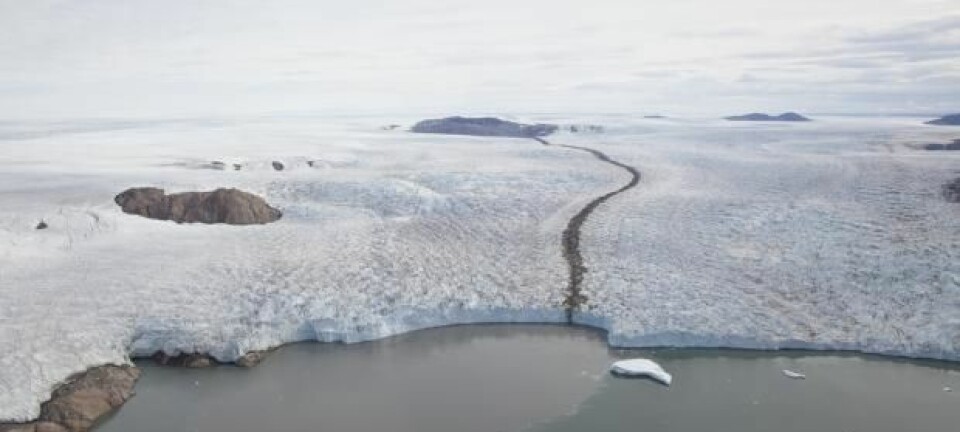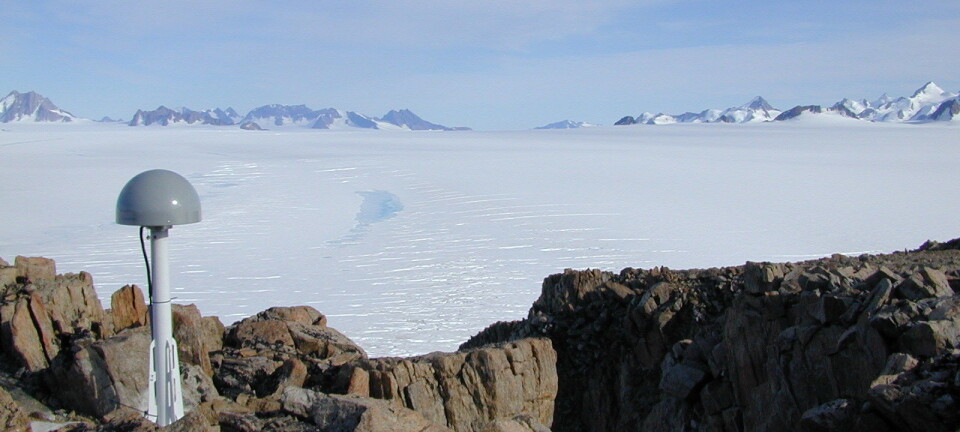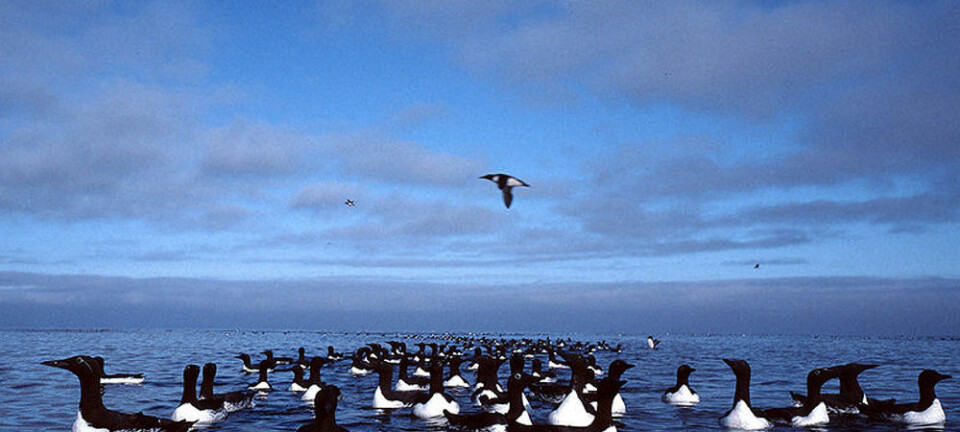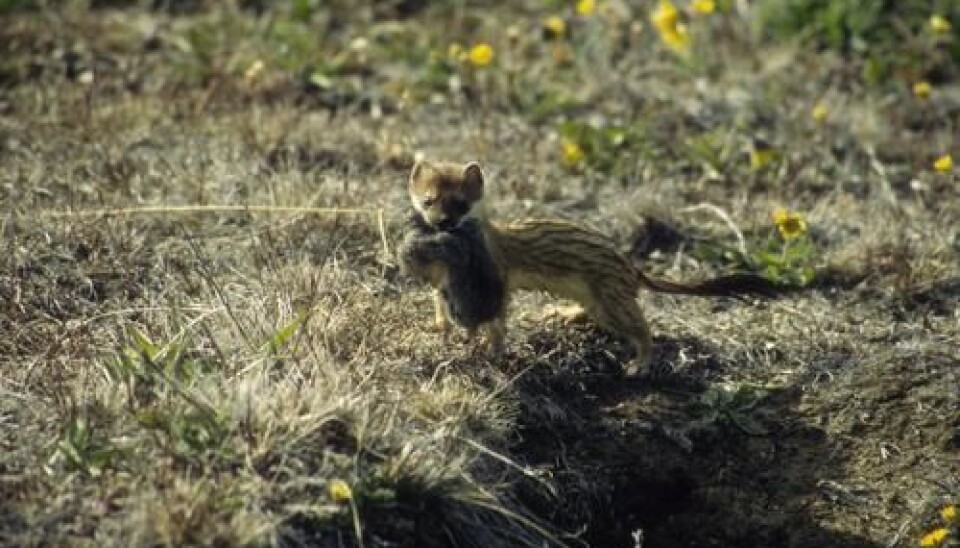
Dramatic changes in Arctic food chain
The collapse of Greenland’s lemming population cycle has disastrous consequences for a number of predators.
Arctic predators are facing a hungry future. A dramatic collapse in the population of Greenland’s only rodent – the collared lemming – means that the food source for several predators has practically vanished.
The snowy owl and the stoat, in particular, are now struggling to find food.
A recent study, published in the scientific journal Proceedings of the Royal Society B., shows that the dramatic reduction in the number of lemmings may have significant knock-on effects on tropically linked species.
“This is the first time that we have documented an actual lemming collapse in Greenland. Our findings show how a small change can spread further through the ecosystem,” says the lead author of the study, Niels Martin Schmidt, of the Department of Bioscience – Arctic Environment, at Aarhus University in Denmark.
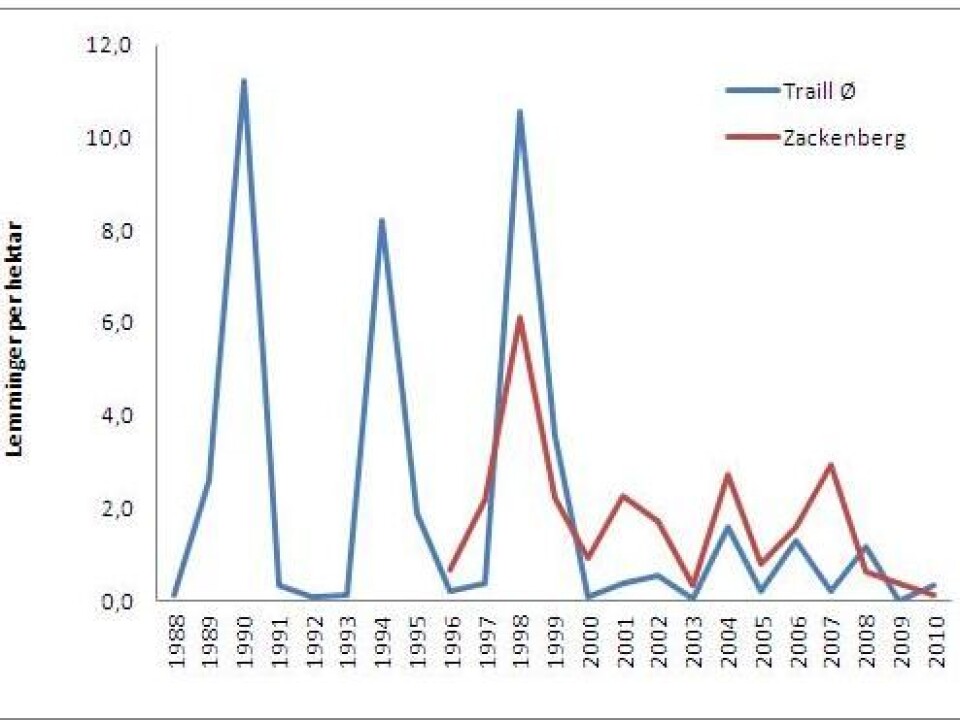
In the period 1988-2010, snowy owl fledgling production decreased by 98 percent, and there is also an indication of a severe population decline of stoats.
Four-year cycle collapsed
Up until the turn of the millennium, the number of lemmings followed a characteristic four-year cycle, rising and falling according to a highly regular pattern.
In the years when the lemming population peaked, predators feasted on the little rodents. This left the lemmings having to spend the next three years rebuilding their population. Over the past 12 years, however, this cycle has collapsed.
This primarily affects predators that have specialised in hunting lemmings. When there are many lemmings, the predators get more food, and also give birth to more young.
A shortened period of snow cover could be one of the reasons for the collapse of the lemming population since the turn of the millennium.
“A dramatic reduction in the lemming population has a direct effect on predators’ reproductive performance,” says Schmidt, adding that there are still some lemmings left in Greenland, but that the numbers remain worryingly low.
Lemmings depend on snow
In winter, lemmings live and breed under the snow in nests made from moss and grass, safe from predators and the unforgiving climate above.
Summer, on the other hand, is a dangerous season for the little rodents. The protective snow has melted and three out of four lemmings are eaten by predators.
“A shortened period of snow cover could be one of the reasons for the collapse of the lemming population since the turn of the millennium,” says the researcher.
He is, however, reluctant to blame it all on global warming as it remains unclear exactly which snow conditions the lemmings thrive under.
Nevertheless, he says, there’s little doubt that less time with snow cover has played a part in the collapse of the lemming population.
Collapse ripples through the ecosystem
For the Arctic fox and the long-tailed seabird known as skua, lemmings also feature highly on the menu. But these predators are less picky. The Arctic fox for instance also feeds on carcasses of animals such as the musk ox.
“Obviously, if the lemming population doesn’t return to its previous levels, it will lead to significant reductions in the population of predators,” says Schmidt.
“The Arctic fox will manage to find other food, but in the long term, the small skua will also be affected by this.”
Long-term monitoring
The estimated number of lemmings and the affected predators is based on several years of detailed monitoring:
“Every year we go out and register nests and burrows in particular areas, and this enables us make estimates of the number and the breeding success of each of the species.”
According to Schmidt, the new findings highlight the importance of long-term monitoring:
”Had we not been monitoring these areas over several years, we wouldn’t have been able to demonstrate that there has been a collapse, and what the consequences are.”
-----------------------------------
Read the Danish version of this article at videnskab.dk
Translated by: Dann Vinther
